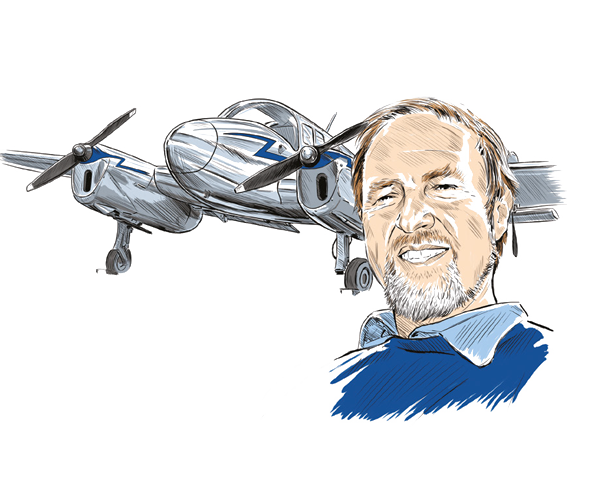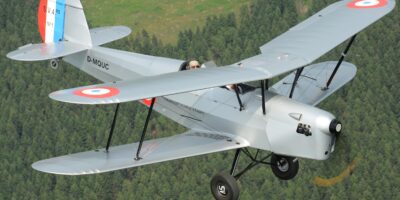In 2018, when the world was a very different place, I wrote about aircraft engines and the emergence of electric or hybrid power. The norm – as in Lycoming, Continental – and Rotax – were still definitely the main players in the piston division, just as they had been for decades, but there were some new players in the all-electric segment. Lightweight electric motors had become more numerous and already on the aircraft market were the Chinese Liaoning Ruixang RXIE and Pipistrel’s Alpha Electro, both of them two-seat trainers with around 60 minutes’ range.
“Hybrid power was more interesting, mainly because it was more flexible”
Hybrid power was more interesting, mainly because it was more flexible in use, but I couldn’t find any actually on the market in 2018, although there was plenty in development. Hungarian manufacturer Magnus had flown its E-fusion two-seater, which combined a Smart car diesel engine and a Siemens electric motor, the Hypstair was a joint effort between Pipistrel and Rotax using a 115hp 914 and a 200hp Siemens, and Tecnam had something similar slated for fitment in its high-wing P2010, using a 140hp Rotax 915. This and the battery pack was to go ahead of the firewall in place of a four-cylinder Lycoming but Tecnam was the only one to suggest this might all be available as an aftermarket drop in.
The only other powerplant swap option in prospect was from British aircraft technology outfit Faradair, which had announced a Lycoming IO-540 substitute ‘power box’ promising 300hp from a bespoke diesel piston engine developed by motorsport experts Prodrive, combined with an electric motor. It weighed in at 250 kilos including batteries, or about the same as the Lycoming for similar power. There was also ZeroAvia, a Californian start-up, which had just flown a Piper Matrix six-seater powered by an electric motor and fed by a hydrogen fuel cell with a small(er) backup battery. They were unusually tight-lipped about the specifics but the technology had already been proven by the ingenious HY4, a German university research project which featured a pair of Pipistrel fuselages separated by a central electric motor and a hydrogen fuel cell, so it was certainly feasible.
Two years on and there have been developments, but predictably not as many or as much as we could have hoped.
Magnus and Pipistrel say that their hybrids are still in development, and Tecnam has announced a Centurion diesel option for its Cessna 172-sized P2010 single, but there is no news on their hybrid. The ones bucking the trend are Faradair, which hasn’t announced anything more on the Lycoming replacement, but have instead announced funding which will keep it in the UK and facilitate development of its innovative BEHA box-wing commuter aircraft, which is powered by a pusher electric motor fed by a gas turbine driving a generator. And ZeroAvia, which has secured funding from UK government ($16.4million), Jeff Bezos (Amazon) and Microsoft’s Bill Gates ($21.4 million between them), this to develop the company’s ZA-600 fuel cell technology which promises to power a ‘10- to 20-seat aircraft up to 500 miles’. That sounds to me as if they aren’t looking to develop an airframe – or even an engine – just the fuel cell which will convert hydrogen into electricity.
I’ll be honest and say I was less than impressed when I last encountered ZeroAvia, but the likes of Bezos and Gates will certainly have done their homework, and ZeroAvia are not only still there, but looking like potential leaders in the technology, so I say good for them. A bit like the scarcity of diesel engines in General Aviation, it has always puzzled me that there hasn’t been more effort put into fuel cell technology in general. Yes, extracting hydrogen (usually from water) is energy intensive (which once again negates the zero emission from its use in a fuel cell) and because hydrogen is very light, it has to be hugely compressed to store any usable amount. That said, the barrage balloons that flew everyday from Cardington near Bedford where I grew up, were inflated by hydrogen synthesised by passing steam over red hot scrap iron. Not remotely high tech, but definitely simple.
It is an uncomfortable truth in any electric power argument that, at the moment, the mining of the materials, the production of the batteries and the generation of the electricity to charge them produces more emissions than it saves when the vehicle is used. It just doesn’t do it in city centres. So… the question is, which it has taken me a long time to ask, what might the medium-term future hold for us GA pilots? I’m almost reluctant to flag this up, but how long do we really think we’ll be allowed to fly something which requires leaded fuel? And if the only alternative retrofit is a Centurion or SMA diesel (which may or may not be approved for your airframe), and which is still a diesel which doesn’t yet feature a catalyst but is the main item in a conversion wearing a price tag of 60 or 70,000 quid… Yes, I know, what on Earth are we supposed to do?
Working vintage aircraft and cars make Mark particularly happy.
[email protected]







